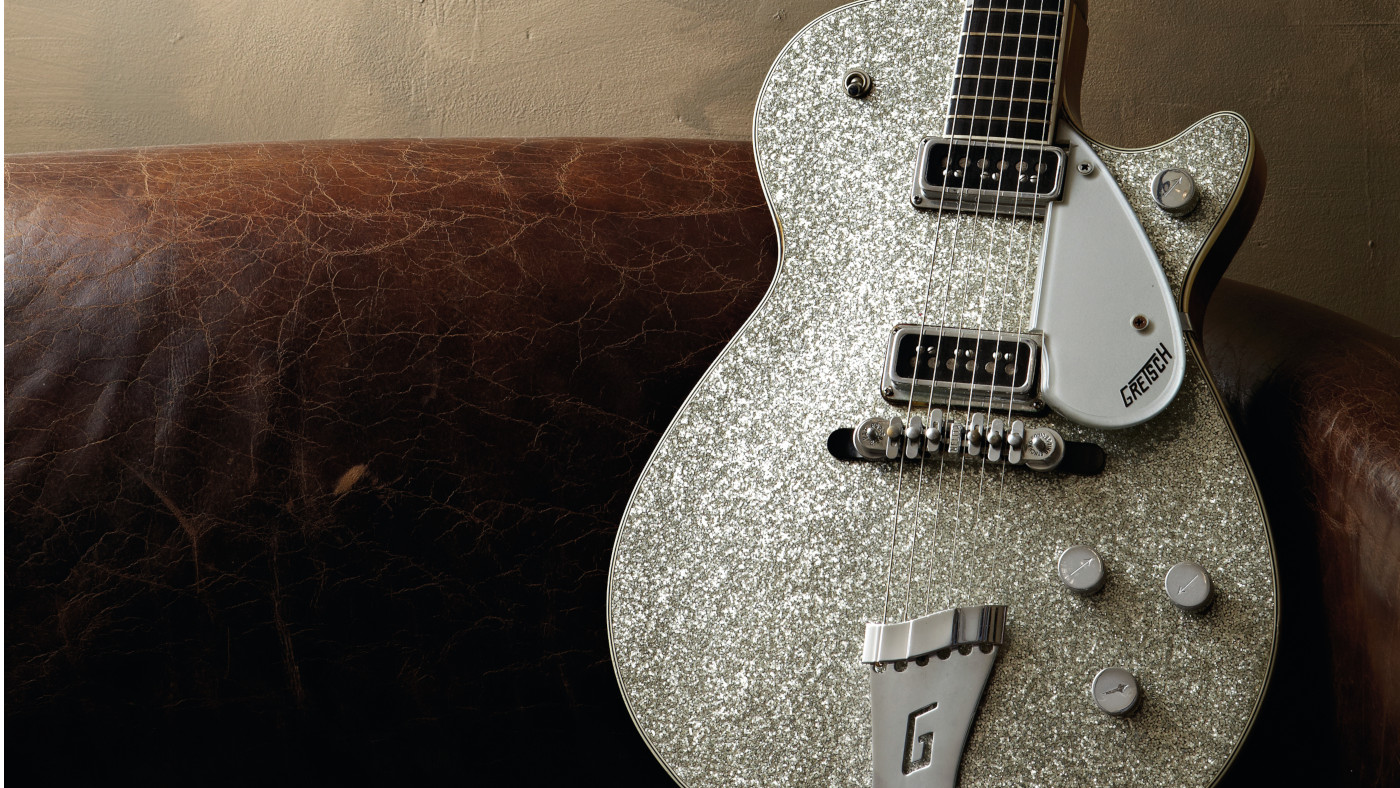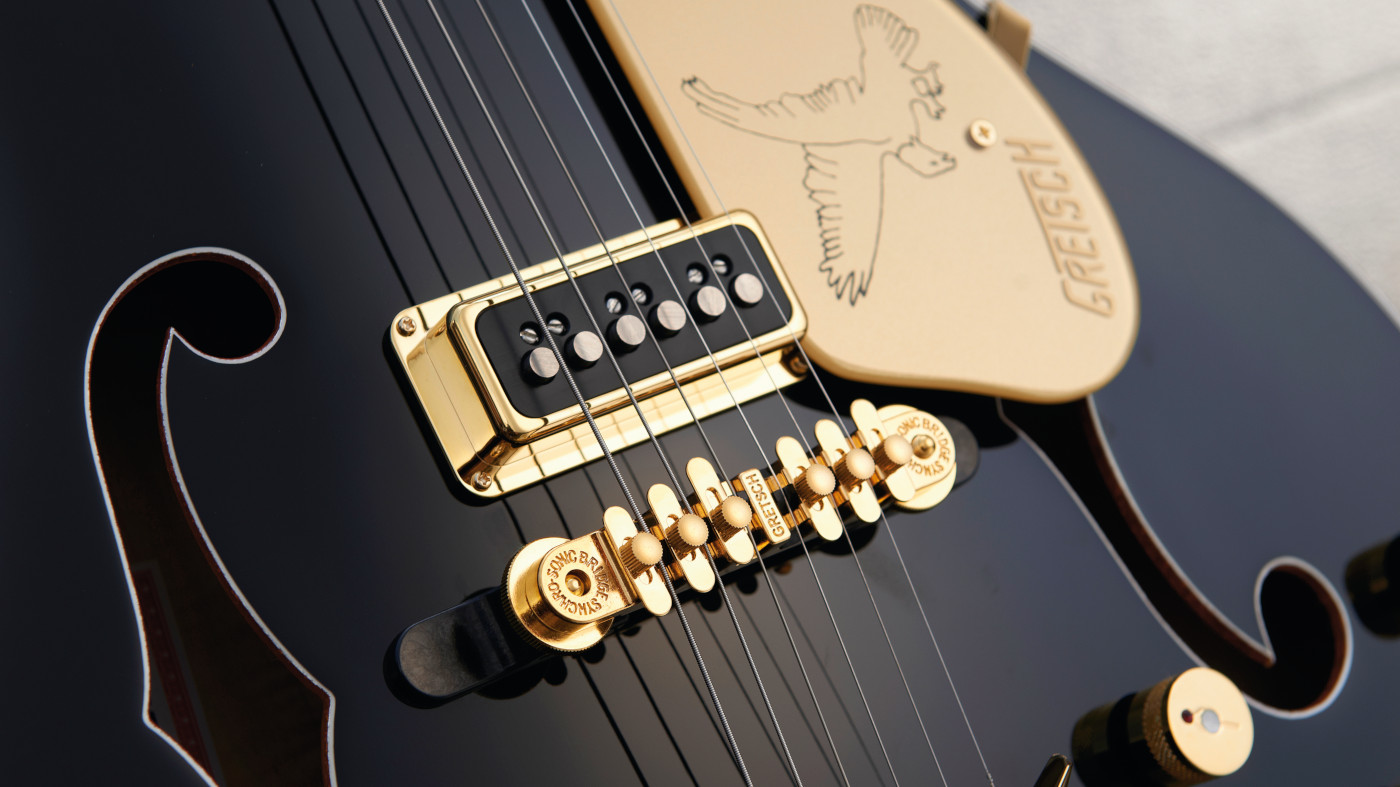
The DeArmond brand Model 2000 single-coil pickup was developed in the late 1940s by Rowe Industries of Toledo, USA, in conjunction with guitar technology pioneer Harry DeArmond. Sporting a unique configuration of individually adjustable polepieces, it became a hit among electric guitarists in the years following its introduction.
Subsequently, the Model 2000 was incorporated into the designs of many a guitar builder including Guild, Epiphone and Martin, although it is perhaps more commonly associated with Gretsch instruments, having become the Brooklyn firm’s de facto standard pickup in the 50s, prior to the arrival of the Filter’Tron in 1957.
Appearing in 1949 on the Electromatic Spanish - Gretsch’s first electric guitar following World War II - the Model 2000 was soon rebranded in the company’s literature as the Gretsch-DeArmond- Fidelatone and again, later, as the Gretsch- Dynasonic, although is often ubiquitously referred to as the Dynasonic.
In more recent years, a renewed interest in the original DeArmond Model 2000 has seen original examples fetching prices in the region of £400 on the vintage market. And while some may be inclined to opt for the real thing when it comes to replacement parts or instrument upgrades and modifications, there are also a number of more affordable Model 2000-style designs currently on offer from the likes of Gretsch (DynaSonic), Seymour Duncan (Duncan Dyno) and TV Jones (T-Armond range).
TV time
Forever on the trail of expert advice, we dropped a call in to TV Jones’s founder and Dynasonic devotee, Tom Jones, to learn more about this pickup’s distinctive sound.
You can really hear every note. It’s very clear but not glassy- sounding and it’s got some grit to it
“When people are looking for pure twang from a Gretsch, it’s best to find one with Dynasonics,” says Tom. “They have great sensitivity - which is why Jimmie Webster liked them so much - and clarity, especially in the bass notes. The large cylinder magnets help you get that surf twang and clear, crisp bass like Duane Eddy’s tone.
“Our T-Armond pickups are very popular with alternative players doing elaborate chords and inversions, because you can really hear every note. It’s very clear but not glassy- sounding and it’s got some grit to it. You can get a nice growl out of the wound strings.
Get the MusicRadar Newsletter
Want all the hottest music and gear news, reviews, deals, features and more, direct to your inbox? Sign up here.

“The TV Jones T-Armond range features shorter magnets [than the original DeArmond Model 2000], so it’s not as boomy in the neck or brittle-sounding in the bridge, and we use different grades of Alnico depending on what strings are being picked up. We also use a non-standard magnet wire in both the neck and the bridge pickups; we offer a neck pickup with thicker wire for more clarity, and a bridge pickup with thinner wire, which sounds a little rounder in the top-end.
“I rewound Brian Setzer’s 1956 [Gretsch] Silver Jet that he used on The Dirty Boogie album with a different gauge based on my T-Armond design, and that worked really well.” With original examples measuring between 7.5k and 13kohms, DeArmond Model 2000s have relatively high DCR readings that can vary considerably, although a good balance may be achieved by adjusting the pickup’s height in relation to the strings and tweaking the height of each polepiece/magnet individually.
Wind the bobbin down
“Generally speaking, if you lower the bobbin and raise the poles, it’s going to sound clearer and thinner,” explains Tom.
When you back off the volume on Dynasonics using a treble bleed, they can sound great
“You can get a fatter sound if you raise the magnet wire closer to the strings, although you will probably need to adjust the poles. For the bridge pickup, you might want to have the low E almost level with the plastic [cover], gradually step the A and D up, bring the G up to roughly where the A is - maybe a little lower - and then position the B and high E more or less level with the low E. It’s the same kind of thing on the neck pickup, but maybe not as aggressive on the wound strings.
“Try positioning the G a little lower than the A, and maybe bring the B down further. B strings always seem to be a little hot on the neck pickup and it’s especially noticeable if you’re playing with a wound G.
“Some old Gretsches had 1meg[ohms] pots and some had 500k pots. It just depended on what the factory was using. When I worked on Brian Setzer’s guitars, I tended to rewire the whole harness with 500k pots, and they really sounded great, but the 1meg pots can give you a little more clarity and brightness. You can also wire in a treble bleed by using a capacitor and resistor in parallel across the volume pot. I like to use a 0.001uF cap and a 150kohm resistor in parallel. When you back off the volume on Dynasonics using a treble bleed, they can sound great.”
We would like to thank Tom Jones of TV Jones
Guitarist is the longest established UK guitar magazine, offering gear reviews, artist interviews, techniques lessons and loads more, in print, on tablet and on smartphones Digital: http://bit.ly/GuitaristiOS If you love guitars, you'll love Guitarist. Find us in print, on Newsstand for iPad, iPhone and other digital readers
“For players who want more – more pickups, more speed, and more in-your-face Kramer attitude”: Kramer delivers the face-melting shred candy with six refreshed electrics, complete with US-made pickups
“The perfect magnetic combination to unlock the full tonal potential of your P/J Bass”: Fender releases a Tim Shaw-designed Chrome Cobalt pickups for the P/J configured bass guitar in your life












